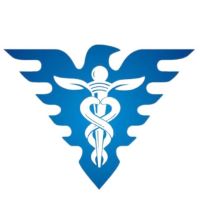Zhejiang University School of Medicine is located in Hangzhou, Zhejiang, a city with a long history, rich culture and inclusiveness. Its predecessor was Zhejiang Medical College, which was formed by the merger of Zhejiang Medical College founded in 1912 (the earliest Western-style medical school run by Chinese people) and National Zhejiang University School of Medicine founded in 1945. It was upgraded to Zhejiang Medical University in 1960. In 1999, the year after the merger of Zhejiang University, Zhejiang University School of Medicine was reorganized and established. It integrates the charm of a century-old institution and brings together the achievements of great scholars and masters. The college adheres to the motto of "benevolence, benevolence, truth-seeking and innovation", takes "benevolence, truth-seeking, innovation and excellence" as its core values, and has written a magnificent legend of educating people in the long river of a hundred years. It has cultivated a large number of outstanding medical talents for the society. It has now developed into a first-class medical school with distinctive advantages and characteristics, strong faculty and outstanding academic achievements. Recruit excellent teachers and gather scientific talents. The college has effectively strengthened the construction of a high-level talent team. It currently has 715 doctoral supervisors, 994 master supervisors, 32 top talents in disciplines, 57 national leading talents, and 102 national young talents. A number of models have emerged, such as "National Advanced Workers", "National Model of Medical Ethics", and "National Most Beautiful Doctors". Constantly innovating and cultivating medical talents. The college takes the cultivation of high-level medical talents as its mission, forms a high-quality talent training system for moral education and all-round development, establishes a full-staff education training model, a full-process education ecosystem, and a full-range teaching interaction mechanism, and creates ten major education platforms such as curriculum, scientific research, practice, culture, and psychology. There are currently 11 colleges and departments, including the School of Basic Medicine, the School of Brain Science and Brain Medicine, the School of Public Health, the First Clinical Medical School, the Second Clinical Medical School, the Third Clinical Medical School, the Fourth Clinical Medical School, the School of Obstetrics and Gynecology, the School of Pediatrics, the School of Stomatology, and the Department of Nursing. It has 7 directly affiliated hospitals, plus a number of non-directly affiliated hospitals and cooperative hospitals, a medical center, the "Belt and Road" International Medical School, and the Institute of Translational Medicine. There are two national "double first-class" construction disciplines in basic medicine and clinical medicine, eight first-level doctoral programs in basic medicine, clinical medicine, stomatology, public health and preventive medicine, pharmacy, nursing, biology, and public administration, and five postdoctoral mobile stations. It has won the first batch of national excellent medical talent training projects and the first clinical medicine postdoctoral training project. It has a national virtual simulation experimental teaching center, a number of national high-quality resource sharing courses and video open courses, the first batch of planned courses of the China Medical Education MOOC Alliance, and the editor-in-chief and deputy editor-in-chief of the national planned textbooks. There are more than 7,500 medical students, including more than 2,000 undergraduates, nearly 5,000 postgraduates, and more than 600 international students. Focusing on national strategic needs, serving the national scientific and technological development. The college insists on being based in Zhejiang, facing the whole country, and going to the world, with high-end planning, deep integration, optimized cooperation, and precise assistance, and gradually realizing a high-level, high-grade, and high-quality social service pattern. Focus on the top-level design of discipline and scientific research development, and coordinate the implementation of major projects, the output of major achievements, and the construction of high-level scientific research bases. It has 4 national key disciplines, 4 national key cultivation disciplines, and 45 national clinical key specialties. It has a number of national high-level scientific research bases, including 2 national clinical medicine research centers, 1 national key laboratory, 2 national international science and technology cooperation bases, 1 national science and technology resource sharing service platform, 1 national collaborative innovation center, 1 frontier science center of the Ministry of Education, 2 key laboratories of the Ministry of Education, 1 engineering research center of the Ministry of Education, and 3 key laboratories of the National Health Commission. Focus on global open development and gather international school resources. In response to the national macro-strategy, the college cooperates with more than 30 high-level medical schools and research institutions overseas such as Harvard University, Oxford University, and the University of Toronto around the overall planning of the school, forming an all-round, multi-channel, and wide-ranging international exchange pattern. Alumni organizations have been established in various parts of the province, Beijing, Shanghai, Guangzhou, Australia, North America, etc., connecting global alumni and building a development community. A century of hard work has made the bitter fragrance fragrant, and the prosperity of the times has made it more fragrant. The college will not forget its original intention, keep its mission in mind, strive to educate students, and continue to explore the path of innovative development in medicine, and play the strongest voice of the times in building a world-class medical school.
-

Tsinghua University
-

Peking University
-

Fudan University
-

Wuhan University
-

Zhejiang University
-

Nanjing University
-

Sun Yat-sen University
-

Tongji University
-

Renmin University of China
-

Jahrom University of Medical Sciences
-

Mesoamerican University
-

Istmo University
-

Mariano Galvez University of Guatemala
-

Regional University of Guatemala
-

Galileo University
-

Francisco Marroquín University
-

Rafael Landívar University
-

University of the Valley of Guatemala
-

University of San Carlos of Guatemala
-

Technological Institute of Tlaxcala Plateau
-

Golfo University
-

Technological University of South Sonora
-

Technological University of Huejotzingo
-

Tizimín Institute of Technology
-

Chilpancingo Institute of Technology

